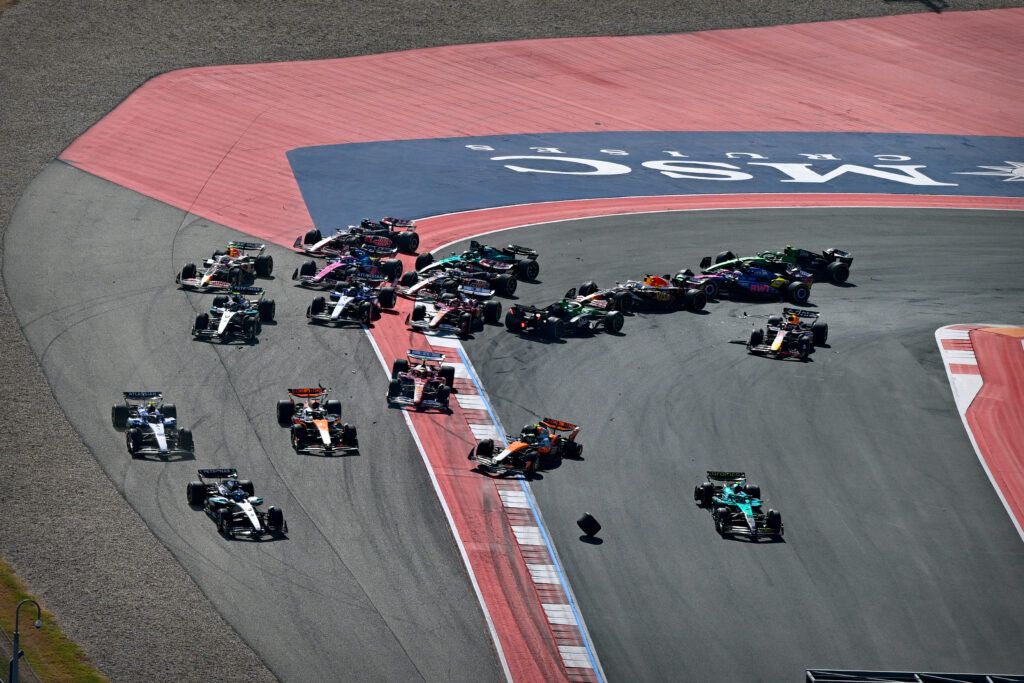“20 years of trying, 20 years of frustration,” it almost felt like Denny Hamlin’s version of that famous line was about to come true last week, right up until the final three laps. While NASCAR’s 2025 season fizzled out with a somber/bitter twist of unpredictability, ending in an anticlimactic Cup Series finale at Phoenix Raceway, Formula One is shaping up for a nail-biting thriller for the ages.
Oscar Piastri’s stint atop the standings is over, with McLaren teammate Lando Norris surging ahead to grab his spot and reigning champion Max Verstappen ready to strike, all under the same traditional, season-long points format.
Now that’s the kind of championship drama that makes fans wish NASCAR still crowned its champions the old-fashioned way. Let’s dive deeper.
Why Is F1 Delivering the Thrills NASCAR No Longer Does?
During a season defined by growing calls to overhaul NASCAR’s ever-controversial playoff format, Corey Heim may have saved the sanctioning body’s reputation from a potential meltdown. The TRICON Garage driver, many argue, was the lone deserving champion on a championship weekend that left favorites like Connor Zilisch and Hamlin bitter, disheartened, and empty-handed.
Both had been dominant all year: Zilisch with eight poles, ten wins, 23 top-10s, 20 top-5s, and 1,013 laps led, and Hamlin with five poles, six wins, 18 top-10s, 14 top-5s, and 1,024 laps led, yet neither walked away with the title.
Instead, it was Jesse Love and Kyle Larson who emerged as champions. To make matters worse, Larson’s title win came on a day when he didn’t lead a single lap, even as his friend-turned-rival (Hamlin) led a race-high 208. It all came down to the playoff format, a system originally crafted to emulate the NBA and NFL’s postseason drama and inject new excitement into stock car racing.
For those unfamiliar, it wasn’t always this way. Until 2004, NASCAR, much like its global counterpart, Formula One, used a full-season points system in which the driver with the most points at year’s end was crowned champion. While the stock car racing giant gradually drifted from those roots, F1 stayed true to its foundation and now appears to be reaping the rewards, even amid its share of controversies.
So why did Hamlin’s loss sting so deeply? Why the hollow, lingering ache among fans? Many believed that after Saturday’s chaos, Sunday would bring redemption, that watching Hamlin finally conquer the mountain would heal the sport’s bruises. Sixty career wins, a lingering lawsuit against the organization itself, a father battling terminal illness, it had all the makings of a storybook ending.
But instead, the very format built to manufacture excitement robbed NASCAR of a moment that could’ve written itself into legend. Meanwhile, F1, still loyal to its traditional points system, continues to turn consistency into pure spectacle. Every race brings a fresh plot twist, a new pulse of tension, and the kind of drama that feels earned, not engineered.
This season alone, Red Bull and its four-time champion Max Verstappen have roared back to life, giving McLaren’s “Papaya Gang” a fight to remember. And within McLaren itself, the rivalry has boiled over, with Lando Norris edging out Piastri as the championship heads to São Paulo, proving that sometimes, the oldest formula still delivers the best stories.
Piastri once held a commanding 34-point lead over Norris and was 104 clear of Verstappen, seemingly in control of the championship. However, since Zandvoort, the tide has turned, with Verstappen finding form, Norris surging, and Piastri stumbling due to costly crashes in Baku, Austin, and Brazil.
In essence, true excitement doesn’t come from reinventing the format; it comes from perfecting the racing itself, without compromising what truly matters. Tell us your thoughts in the comments below.

